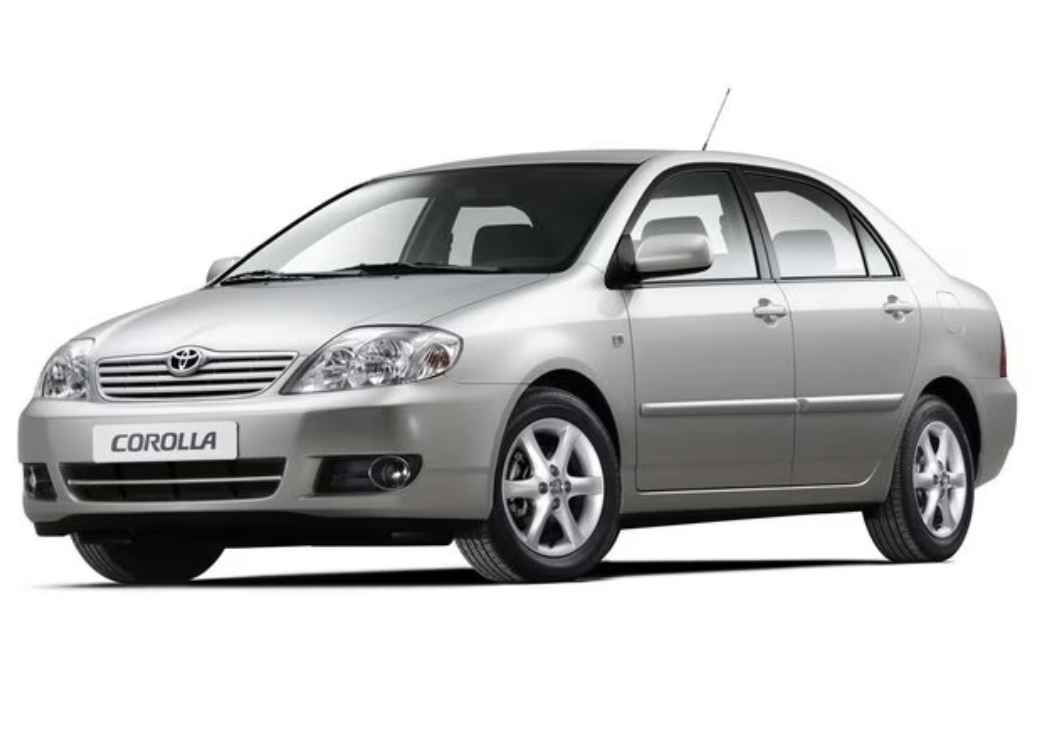When it comes to reliable and enduring cars, the Toyota Corolla has earned its reputation as a beloved companion on the roads. The 2003 Toyota Corolla model, in particular, has won the hearts of many drivers with its dependability and efficiency. However, like any mechanical marvel, it is not immune to occasional hiccups. One such issue that has been reported by some Corolla owners is the P0770 trouble code. In this article, we will dive into the world of the P0770 code, exploring its causes, symptoms, and possible solutions, all to help you keep your Toyota Corolla running smoothly.
What is the P0770 Code?
The P0770 code is related to the transmission system of your Toyota Corolla. When your car’s onboard diagnostic system detects an issue within the shift solenoid E circuit, it triggers the P0770 code. This can lead to a variety of problems with the transmission’s performance and overall driving experience.
Possible Causes of the P0770 Code
Several factors can contribute to the appearance of the P0770 code in your Toyota Corolla. Some common culprits include:
- Faulty Shift Solenoid E: The shift solenoid E is responsible for controlling the flow of transmission fluid within the transmission. If this component malfunctions, it can trigger the P0770 code;
- Electrical Issues: Problems with the wiring or connectors related to the shift solenoid E can also cause the trouble code to appear;
- Low Transmission Fluid: Inadequate transmission fluid levels can lead to improper solenoid operation and trigger the P0770 code;
- Contaminated Transmission Fluid: If the transmission fluid becomes contaminated or deteriorates over time, it can interfere with the proper functioning of the shift solenoid and cause the code to activate;
- Transmission Control Module (TCM) Problems: Issues with the TCM, which manages various aspects of the transmission’s operation, can also lead to the P0770 code.
Symptoms of the P0770 Code
Detecting the P0770 code in your Toyota Corolla might be accompanied by several noticeable symptoms, including:
1. Illuminated Check Engine Light
The most obvious indication of the P0770 code is the illumination of the check engine light on your car’s dashboard. This warning light serves as an early alert to potential problems, urging you to investigate further;
2. Transmission Issues
The shift solenoid E plays a vital role in the smooth shifting of gears within the transmission. If this component is faulty, you may experience erratic shifting, delayed gear changes, or even total transmission failure;
3. Reduced Fuel Efficiency
A malfunctioning transmission can strain the engine, leading to reduced fuel efficiency. If you notice your Corolla guzzling gas more than usual, it might be related to the P0770 code;
4. Harsh Engagements or Slippage
When the shift solenoid E is not functioning correctly, you might notice harsh engagements when shifting gears or instances of transmission slippage, where the gears seem to slip out of place momentarily.

Diagnosing and Fixing the P0770 Code
If you suspect the P0770 code is affecting your Toyota Corolla, it’s essential to diagnose and resolve the issue promptly. While some automotive enthusiasts might choose to tackle the problem themselves, it’s often best to seek the expertise of a qualified mechanic or dealership. However, if you’re curious about the general process, here’s what it typically entails:
- OBD-II Scanner. The first step in diagnosing the P0770 code is to connect an OBD-II scanner to your car’s onboard diagnostic port. The scanner will retrieve the trouble codes stored in the system, providing valuable information about the issue;
- Visual Inspection. A visual inspection of the transmission system and its components can reveal any obvious signs of damage, such as disconnected wires or leaks;
- Check Transmission Fluid Levels. Inspecting the transmission fluid level is crucial. If it’s low, topping it up might solve the problem. However, if the fluid appears contaminated, it’s advisable to change it entirely;
- Testing the Shift Solenoid E. The mechanic will test the shift solenoid E using specialized equipment. This test will determine whether the solenoid is functioning correctly or needs replacement;
- Inspecting Wiring and Connectors. A thorough examination of the shift solenoid E’s wiring and connectors will identify any potential electrical issues contributing to the code;
- TCM Evaluation. The transmission control module will be checked for malfunctions, as problems with the TCM can also trigger the P0770 code;
- Repair or Replacement. Once the root cause of the P0770 code is identified, the mechanic will proceed with repairing or replacing the faulty components as needed.
Preventive Measures
While some car issues are inevitable, certain steps can reduce the likelihood of encountering the P0770 code in your Toyota Corolla:
1. Regular Maintenance
Regular maintenance is crucial for ensuring the longevity and optimal performance of your Corolla’s transmission system. The recommended maintenance schedule, provided by the vehicle’s manufacturer, outlines key maintenance tasks that should be followed diligently.
- One essential maintenance task is the regular change of transmission fluid. Over time, transmission fluid can become contaminated with debris and lose its effectiveness, potentially leading to transmission issues;
- By adhering to the recommended fluid change intervals, you can prevent such problems and keep the transmission running smoothly.
Neglecting transmission maintenance can lead to costly repairs and may even render your Corolla inoperable. The transmission is one of the most intricate and critical components of a vehicle, making proactive care essential to avoid breakdowns and extend the life of the transmission.
2. Quality Transmission Fluid
Using high-quality transmission fluid that meets Toyota’s specifications is crucial for the smooth operation and longevity of your Corolla’s transmission components. Transmission fluid serves multiple vital functions, including lubricating gears, reducing friction, and dissipating heat. Inferior or incompatible fluids can lead to excessive wear, overheating, and even damage to the transmission system.
Toyota engineers design specific transmission fluids to suit their vehicles’ unique requirements, ensuring optimal performance and protection. Using the correct fluid maintains the proper viscosity and chemical properties needed for seamless gear shifts and efficient transmission function.
3. Address Check Engine Light Promptly
The check engine light serves as a crucial early warning system for potential issues within your Corolla’s engine and other vital systems. If the check engine light illuminates, it’s essential not to ignore it or dismiss it as a minor glitch. Ignoring the warning can lead to serious consequences, including major engine damage or other costly repairs.
- When the check engine light comes on, it indicates that the vehicle’s onboard diagnostics system has detected a fault or irregularity in one or more components. While the issue may seem minor at first, it could be an early sign of a more significant problem brewing beneath the surface;
- As soon as the light appears, it’s best to take immediate action. Schedule a diagnostic check with a qualified mechanic or visit a Toyota service center to identify the specific issue triggering the warning. Modern diagnostic tools allow technicians to pinpoint the problem accurately;
- Addressing potential issues promptly can prevent them from escalating into more severe and expensive problems. In many cases, early intervention can save you time, money, and the inconvenience of a breakdown.
Remember that the check engine light may illuminate for various reasons, ranging from a loose gas cap to a malfunctioning sensor or a more complex engine issue. The expertise of a trained professional is crucial in determining the root cause and providing the appropriate solution.
Conclusion
The 2003 Toyota Corolla is undoubtedly a reliable and efficient car, but like any automobile, it can encounter problems such as the P0770 code. Understanding the possible causes and symptoms of this trouble code empowers you to take appropriate action and keep your Corolla running smoothly on the roads for years to come. Whether it’s regular maintenance, attentive driving, or seeking professional help, taking care of your Corolla ensures that it remains a trusted companion on your journeys. Remember, keeping your Corolla in top shape is not just about fixing problems but also preventing them from arising in the first place. So, happy driving and may your Toyota Corolla continue to be a loyal and trouble-free ride!
